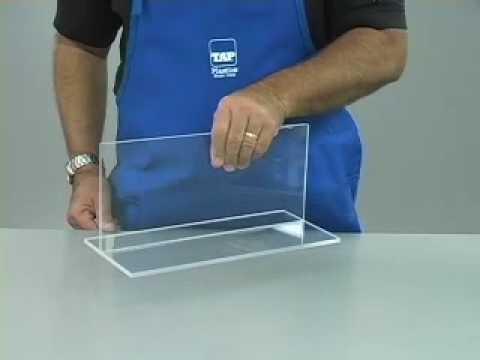
Connecting acrylic pieces together is an important step involved in the construction of any acrylic item, be it a display case or plinth. There are several techniques used by professional plastic fabricators to create acrylic joints. While some involve usage of heavy-duty adhesive, others employ dissolving of the pieces at their ends for cementing them. However, adhesives are usually not used in the production of items meant for commercial use.
Let’s have a look at 3 common methods used by experts dealing with Perspex in Sydney for creating acrylic joints:
Dip Cementing
Also known as soak cementing, this technique is usually used for making thick joints. First, the edges that have to be fused are dipped in a tray containing a special solvent for around twenty seconds. After that, they are removed from the tray and held in vertical position so that any excess solvent runs off. Finally, the softened sides are pressed against each other without applying too much pressure during the first 30 seconds, following which the pressure is increased to make the joint strong and force out air bubbles.
Capillary Cementing
This method is perhaps the most popular among all the techniques preferred to fuse acrylic pieces together. However, it only bears the desired results if the edges to be connected fit perfectly. Prior to application of the cementing material, the pieces are joined using masking tape and then clamped horizontally. Once that has been done, the cement is carefully poured along the joint on its both sides from a needle-nosed bottle. It takes around 1 or 2 days for the bond formed to reach its maximum strength.
Viscous Cementing
Viscous cementing is used to connect those pieces which cannot be joined together with the capillary or dip method, especially the ones that don’t fit with each other perfectly. The material applied to establish the joint is usually dense and can fill even minute gaps. It is often prepared by dissolving acrylic chips in a solvent.
Thus, these are the most popular methods used to join Perspex or Plexiglass pieces at the time of making acrylic creations like shop front signage, point of sale displays, cases, aquariums, photo frames, plinths, stands and so on. The above mentioned descriptions of the methods are very basic, experienced professionals normally experiment sometimes with the steps involved to ensure tough and durable bonds. If you wish to know more about them, try looking for related articles online.
Advertise on APSense
This advertising space is available.
Post Your Ad Here
Post Your Ad Here

Comments (1)
ivan simeonov18
marketer
good article i like it nice work good luck on all online